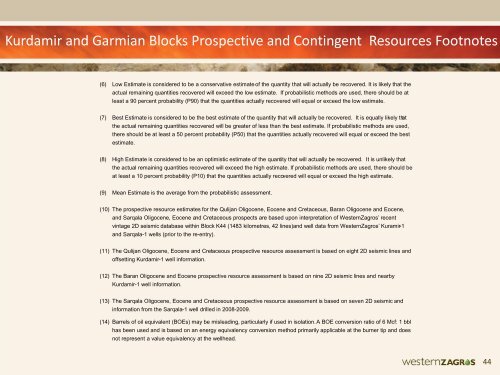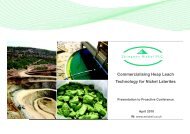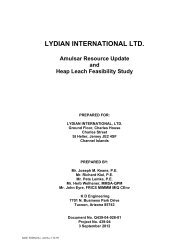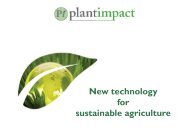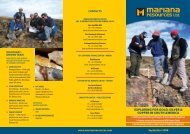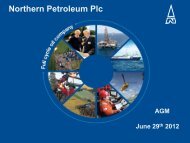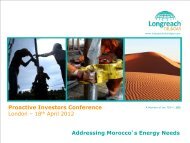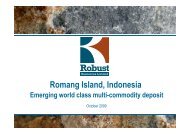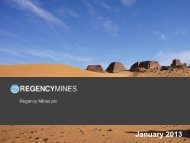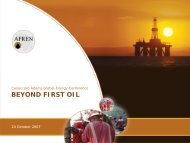WesternZagros Resources One2One Presentation - September 2011
WesternZagros Resources One2One Presentation - September 2011
WesternZagros Resources One2One Presentation - September 2011
You also want an ePaper? Increase the reach of your titles
YUMPU automatically turns print PDFs into web optimized ePapers that Google loves.
Kurdamir and Garmian Blocks Prospective and Contingent <strong>Resources</strong> Footnotes<br />
(6) Low Estimate is considered to be a conservative estimate of the quantity that will actually be recovered. It is likely that the<br />
actual remaining quantities recovered will exceed the low estimate. If probabilistic methods are used, there should be at<br />
least a 90 percent probability (P90) that the quantities actu ally recovered will equal or exceed the low estimate.<br />
(7) Best Estimate is considered to be the best estimate of the quantity that will actually be recovered. It is equally likely th at<br />
the actual remaining quantities recovered will be greater of less than th e best estimate. If probabilistic methods are used,<br />
there should be at least a 50 percent probability (P50) that the quantities actually recovered will equal or exceed the best<br />
estimate.<br />
(8) High Estimate is considered to be an optimistic estimate of the quan tity that will actually be recovered. It is unlikely that<br />
the actual remaining quantities recovered will exceed the high estimate. If probabilistic methods are used, there should be<br />
at least a 10 percent probability (P10) that the quantities actually reco vered will equal or exceed the high estimate.<br />
(9) Mean Estimate is the average from the probabilistic assessment.<br />
(10) The prospective resource estimates for the Qulijan Oligocene, Eocene and Cretaceous, Baran Oligocene and Eocene,<br />
and Sarqala Oligocene, Eocene a nd Cretaceous prospects are based upon interpretation of <strong>WesternZagros</strong>’ recent<br />
vintage 2D seismic database within Block K44 (1483 kilometres, 42 lines)and well data from <strong>WesternZagros</strong>’ Kuramir - 1<br />
and Sarqala - 1 wells (prior to the re - entry) .<br />
(11) The Qulijan Oligocene, Eocene and Cret aceous prospective resource assessment is based on eight 2D seismic lines and<br />
offsetting Kurdamir - 1 well information.<br />
(12) The Baran Oligocene and Eocene prospective resource assessment is based on nine 2D seismic lines and nearby<br />
Kurdamir - 1 well information.<br />
(13) The Sarqala Oligocene, Eocene and Cretaceous prospective resource assessment is based on seven 2D seismic and<br />
information from the Sarqala - 1 well drilled in 2008 - 2009.<br />
(14) Barrels of oil equivalent (BOEs) may be misleading, particularly if used in isolation. A BOE conversion ratio of 6 Mcf: 1 bbl<br />
has been used and is based on an energy equivalency conversion method primarily applicable at the burner tip and does<br />
not represent a value equivalency at the wellhead.<br />
44


